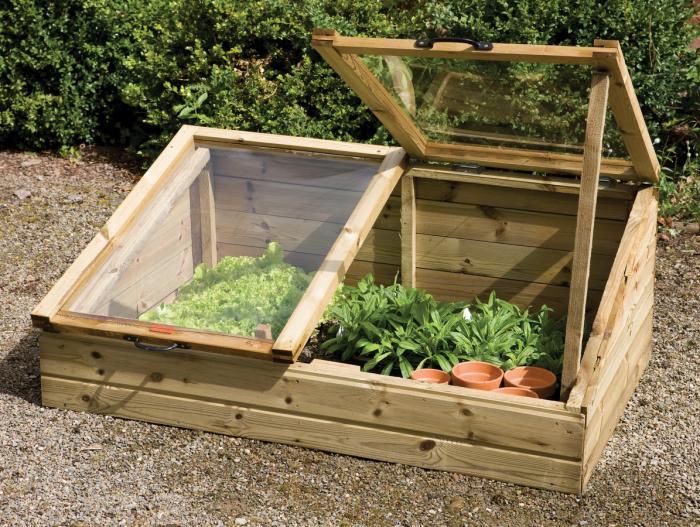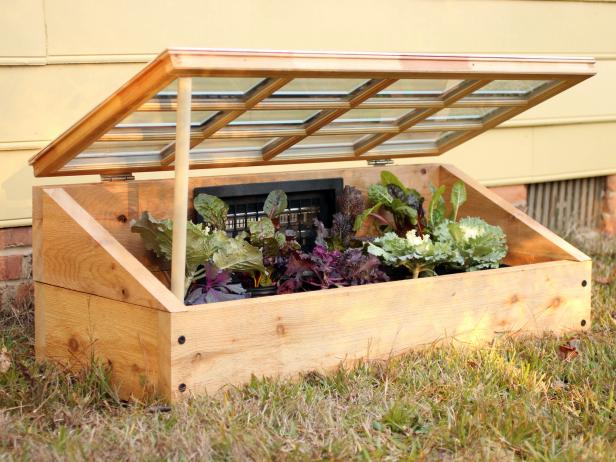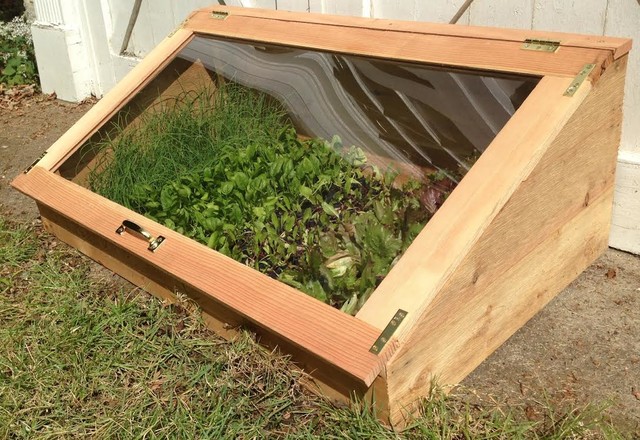Call us at 725-239-9966!
M-F: 8 AM-7 PM PST
Call us at 725-239-9966!
M-F: 8 AM-7 PM PST

A cold-frame greenhouse is an invaluable tool for any gardener looking to extend their growing season. This mini-greenhouse without a bottom allows you to grow plants in a protected environment, sheltered from external factors.
In this comprehensive guide, we'll cover everything you need to know about cold-frame greenhouses, from what they are to how to build and use them effectively. You'll learn how cold frames can help you grow earlier in spring, later into fall, and even throughout the winter in some cases.
Cold frames are mini greenhouse structures that help extend the growing season. They shelter plants from cold weather and frost without needing heating or electricity.
With a cold frame, you can start planting earlier in spring, grow later into fall, and protect delicate plants year-round.
Sunny location, proper ventilation, and temperature monitoring are crucial to prevent overheating inside the cold frame.
Many types of vegetables, herbs, flowers, and seedlings like lettuce, spinach, and cabbage thrive in cold frames in cool weather.
Cold frames allow gardeners to customize microclimates and grow plants not normally suited for their climate zone or location.

A cold frame is a small, enclosed structure that acts like a mini greenhouse. It typically sits directly on the ground or on raised garden beds.
The main components are:
Transparent roof - Usually made of glass, plastic sheeting, or polycarbonate panels to let in sunlight.
Short side walls - Typically 1 to 2 feet tall, made of wood, brick, bales of straw, or other materials.
Lid or roof vent - Allows heat and humidity to escape. Can be manually propped open or automated.
Unlike a real greenhouse, cold frames lack electricity, running water, and heating systems. Their simplicity makes them an affordable option for home gardeners looking to extend the growing season.
"Cold frame" refers to their ability to protect plants from cold temperatures. The transparent roof acts as a barrier between plants and the environment. During the day, the enclosed space warms up like a greenhouse from absorbed sunlight. At night, the lid can close to retain heat inside.
Ventilation prevents overheating on sunny days. Most cold frame designs incorporate manual, self-regulating vents that prop open once temperatures climb too high.
Overall, cold frames create a favorable microclimate that's 5-10°F warmer than the ambient outdoor temperature. This sheltered environment allows you to plant earlier in spring and extend your growing season into fall.
There are several key benefits that make cold-frame greenhouses a useful addition to any garden:
One of the primary benefits is the ability to extend your frost-free growing season. The enclosed space protects plants from cold snaps and light frosts.
Depending on your climate zone, cold frames can add 4-8 weeks on either end of the normal gardening season. In warmer zones like 9-10, they may allow gardening year-round.
With a cold frame, you can safely:
Plant seedlings or seeds weeks earlier in spring before your last expected frost date. The warmer interior lets seeds germinate and get a head start on growth.
Grow tender crops like lettuce, kale, carrots, and radishes further into fall and early winter. Protect them from freezing nights and harsh weather.
Start harvesting crops 1-2 months sooner than normal in an unprotected garden.
In addition to frost protection, cold frames shield plants from other cold-weather conditions like snow, wind, and heavy rain.
The enclosure keeps precipitation out and prevents delicate plants from becoming damaged, broken, or uprooted. Snow accumulation and icy winds are also blocked.
For example, cold frames can extend the strawberry season by protecting blossoms from late spring frosts. Lettuce, spinach, and other greens will last longer into winter versus being exposed.
Before transplanting seedlings outdoors in spring, it's important to gradually acclimate or "harden" them to outside conditions. This hardening-off process toughens up the plants.
A cold frame is ideal for:
Hardening off seedlings started indoors or in a greenhouse. Slowly introduce to sun, wind, and cool nights over 1-2 weeks.
Protecting newly transplanted seedlings as they establish roots and adjust to the garden.
Sheltering delicate, cold-sensitive plants that struggle with direct exposure.
In cold climates, gardeners often overwinter plants by moving them indoors under grow lights or in a greenhouse. But some plants can be overwintered right in a cold frame.
Tender perennials like fuchsias and geraniums can survive in a cold frame with extra insulation like straw around the sides.
Many hardy greens like kale, chard, and some Asian greens will tolerate cold frames throughout winter in zones 5-6 or higher.
Dormant plants, bulbs, corms, and tubers can be buried in the soil of an unheated cold frame over winter.
Cold frames are useful for several groups:
Home Gardeners - Extend your growing and harvesting season, protect delicate plants, and experiment with new varieties. Even in milder climates, cold frames offer flexibility.
Small Farm Growers - Get crops to market earlier and increase yields. Protect specific plants or customize conditions in sections of your fields.
Plant Nurseries - Harden off seedlings before sale. Keep plants sheltered and avoid losses. Customize microclimates as needed.
Urban Gardeners - Maximize limited growing space. Try plants not normally suited for your area. Keep plants warm in tiny yards surrounded by cold concrete.

Getting the most out of a cold frame depends on proper setup and maintenance. Follow these tips when you use cold frames in your garden:
Choose a sunny spot in your garden that receives at least 6 hours of direct sun daily, especially in winter. Avoid shade from buildings, trees, and shrubs.
For freestanding cold frames, level the ground if needed so the structure sits securely. Position the enclosure with the long side facing south to capture more light.
For in-ground frames, dig trenches or beds for the walls to nestle into. Amend the soil with compost for drainage and nutrition.
Many options are available for purchase, but you can also build a custom cold frame from simple materials:
Use cinder blocks, straw bales, bricks, or boards for short side walls, about 12-24 inches high.
For the top, look for old windows at salvage shops. Plexiglass, rigid plastic sheets, and corrugated polycarbonate panels also work. Attach hinges to prop open.
Make sure the lid allows airflow when propped open at least a few inches. Include automatic openers if possible.
Face the structure south and angle the top toward the south by about 10-15 degrees for more direct sun exposure.
Insulate sides with straw bales, bags of leaves, or other materials if keeping plants through winter.
Once built and in place, use these tips to maintain ideal conditions inside a cold frame:
Ventilate properly on sunny days - Open lids, ends, or vents to prevent overheating.
Water when needed to keep the soil consistently moist but not saturated.
Monitor temperatures daily and add or remove insulation as needed.
Adjust manual vents and lids based on weather conditions. Close tightly at night.
Remove dead leaves or plants to prevent disease and pests.

One of the most common cold frame gardening questions is what can I grow in it? Let's look at suitable crops for each season:
Cold-hardy greens and vegetables - Lettuce, spinach, Swiss chard, kale, carrots, beets, onions, radishes
Herbs like parsley, cilantro, dill
Early annuals and flower seedlings are to be transplanted later
Warm weather crops after your last expected frost - Tomatoes, peppers, cucumbers, melons, squash, eggplant
Annual flower and vegetable seedlings to harden off
Basil, dill, and cilantro for continual harvest
Second crop of lettuce, spinach, kale, Asian greens, carrots, beets, radish
Hardy herbs like parsley, sage, thyme, cilantro
Cover crops like fava beans, clover, vetch
With added insulation, try growing microgreens, spinach, lettuce, kale, Swiss chard, Asian greens
Parsley, thyme, oregano, dill, chervil
Garlic, shallots, and onion sets planted in the fall
Certain hardy perennials if properly insulated
Here is a table summarizing some of the best options for plants in a cold frame by season:
| Early Spring | Late Spring | Autumn | Winter |
|---|---|---|---|
| Lettuce | Tomatoes | Lettuce | Microgreens |
| Spinach | Peppers | Spinach | Spinach |
| Swiss Chard | Cucumbers | Kale | Lettuce |
| Kale | Melons | Asian Greens | Kale |
| Carrots | Squash | Carrots | Swiss Chard |
| Beets | Eggplant | Beets | Asian Greens |
| Onions | Basil | Radish | Parsley |
| Radishes | Dill | Parsley | Thyme |
| Parsley | Cilantro | Sage | Oregano |
| Cilantro | Annual flowers | Thyme | Dill |
| Dill | Vegetable seedlings | Cilantro | Chervil |
| Flower seedlings | Cover crops | Garlic/Onions | |
| Hardy perennials |
As you can see, cold frames allow you to grow a wide variety of plants. Focus on cold hardy, frost-tolerant vegetables and herbs along with flowers and transplants.

Cold frames come in many different designs, styles, and sizes to suit your needs:
Freestanding - Structure sits on an existing garden bed or surface. More portable and movable.
In-Ground - Side walls sink into a dug-out trench in the ground. More permanent but better insulated.
Wood - Cedar, redwood, pine, etc.
Plastic - Polyethylene, plexiglass, corrugated panels.
Glass - Old windows, glass panels.
Straw Bales or Bricks
When selecting materials for your cold frame, consider this comparison of the pros and cons of different options
| Material | Pros | Cons |
|---|---|---|
| Wood | Durable, sturdy | High maintenance |
| Plastic | Cheap, easy to find | Less durable |
| Glass | Maximum light | Can break, expensive |
| Straw bales | Cheap, plentiful | Poor insulation, temporary |
| Bricks | Readily available | Heavy, less insulation |
Manual - Hinged lid, swinging windows, or propped open end. Requires daily monitoring.
Self-Regulating Vents - Uses springs, pistons, or sensors to open vents at set temperature. More convenient.
Fans - Electric fan systems for forced air ventilation.
Mini (2-4 square feet) - For starting seeds and small plants. Easy to move.
Medium (8-25 square feet) - For hardening off seedlings and growing greens.
Large/Walk-in (100+ square feet) - Higher cost but allows growing larger plants.

Follow these tips throughout the seasons for maximum success:
During winter, insulate the cold frame with straw, leaves, or blankets to retain more warmth.
On sunny winter days, prop lids open for an hour to provide fresh air and prevent premature sprouting.
In spring and fall, ventilate the cold frame when temps exceed 80°F inside to avoid overheating.
To conserve moisture, add a layer of compost or mulch on the soil surface inside the frame.
Monitor for pests like aphids and diseases like damping off. Remove any infected plants immediately.
Prevent weeds from taking over open soil by using landscape fabric or a thick mulch layer.
Check soil moisture every few days and water when the top few inches become dry. Prioritize consistency.
In summer, shade cold frames with shade cloth if temps will exceed 90°F inside.
As you can see, cold-frame greenhouses are useful structures that can extend the growing season by weeks or even months in many climates. With so many designs and customizable options, there are cold frames suitable for most garden settings and budgets. Whether purchased ready-made or built from DIY plans, a cold frame is a relatively simple way to boost your gardening productivity. Follow the above tips and your cold frame will produce healthy plants and bountiful harvests. Just be sure to match plants to your particular climate and conditions.
A cold frame can be used to grow cool-season crops like lettuce, spinach, and root vegetables a few weeks earlier in spring and later into fall. The enclosed space protects tender seedlings and plants from cold nights and light frosts, allowing you to plant before your last frost date. Cold frames extend the season by trapping solar energy during the day to create a warmer microclimate inside.
To keep your plants warm inside a cold frame during cold nights, make sure to close the lid or vent tightly. You can add an extra layer of insulation like blankets, burlap sacks, or straw around the sides. Avoid old glass windows which don’t insulate as well. Monitoring temperatures and making adjustments helps maintain ideal growing conditions inside.
Cold frames are typically built low to the ground, either sunk into garden beds or built on top of raised beds. Use materials like wood, plastic sheeting, straw bales, or bricks for the sides. Make sure the lid or roof is transparent to let in light (glass or plastic sheeting). Building the back taller than the front helps maximize light exposure and solar heating. Face the structure south or southeast to get the most sun.
A cold frame purchased from a garden store can't typically be used year-round unless you add heating and insulation. Cold frames are commonly used in spring and fall because they lack the warmth and protection to sustain tropical plants through frigid winters. However, they can be used for overwintering dormant plants and hardy greens that tolerate near-freezing temperatures at night.
The best way to grow a garden in a cold frame is to plant cool-season vegetables that can tolerate cooler nighttime temperatures in the 40s or 50s F, such as lettuce, kale, spinach, radishes, carrots, beets, and Brussels sprouts. Make sure to ventilate the cold frame during the day to prevent overheating. Add insulation like straw around the sides to retain heat at night when temperatures dip below freezing.

{"one"=>"Select 2 or 3 items to compare", "other"=>"{{ count }} of 3 items selected"}
Leave a comment